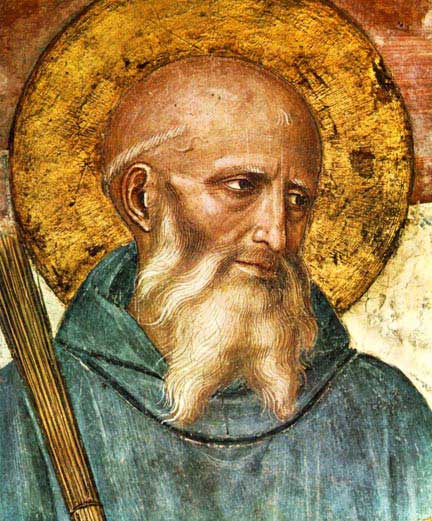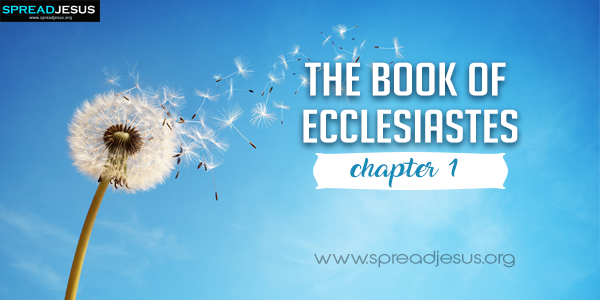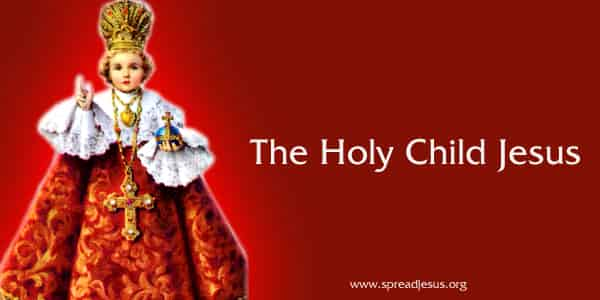Saint Benedict Catholic Saint
CATHOLIC SAINTS 28-12-2023, 19:38

Saint Benedict
Catholic Saint
st.Benedict-Father of Western monasticism and founder of the Benedictines
Feast Day :July 11 (Western Church), March 14 (Eastern Church)
Name meaning: “Blessed”
Also known as: Benedict of Nursia
Benedict was born ca. 480 in the Sabine town of Nursia. As a youth he was attracted to the art of rhetoric, and was sent to Rome to be educated. He was so revolted by the licentiousness of the city that he and his nurse fled to Enfide, a village about 30 miles away. After a time Benedict then went to a remote place now called Subiaco, where he encountered a monk, Romanus, who led him to a cave. Here Benedict became a hermit, at about age 14, and spent three years living in the cave. Romanus brought him bread every day, which Benedict raised by rope to his cave. While at Subiaco, Benedict was violently attacked one day by a black bird, which he sent off by making a sign of the cross. He knew he was under attack by Satan and was seized with a temptation against holy purity. To conquer it, he undressed and rolled himself several times in thorn bushes. His remedy worked, and he said throughout his life that he never again experienced such an attack on his purity. The thorn bushes became celebrated and were regarded as relics. His act inspired many later saints to mortify themselves whenever they felt themselves tempted or demonically assailed. Centuries later, in 1223, St. Francis of Assisi visited the cave. According to one story, he grafted rose bushes onto the thorn bushes. Another story says he blessed the thorn bushes, converting them into roses, which had healing properties to the pilgrims who visited the site. Benedict’s solitude eventually came to an end. His sanctity and alleged miraculous powers began to attract followers. Benedict organized them into 12 monasteries of 12 monks each, and each under a prior.
He exercised supreme rule over all. The Subiaco monastic community became a permanent settlement, but Benedict at some point left abruptly, allegedly because another priest, Florentius, attempted to undermine him. In about 525, Benedict went to Monte Cassino and destroyed the temple to Apollo at its top. In its place, he established ca. 530 the first structures of a monastery that would become the most famous in the world, the birthplace of Western monasticism. The monastery attracted a large following of disciples, as well as Church officials from Rome and Capua, who came to consult Benedict for his wisdom and prophetic powers. At about this time, he probably wrote his famous Regula Monachorum, called the Rule (also Benedict’s Rule or the Benedictine Rule), a monastic rule that became the standard for monastic living throughout the Western world. The Rule calls for a year of probation, a vow of obedience to a single abbot or abbess, moderate asceticism, and work and prayer (ora et labora became a motto of the Benedictines). Benedict’s rule was influenced by, and passages were accommodated from, the Rule of the Master, a monastic document also dating from the sixth century but not as spiritual, personal and broad as Benedict’s Rule. Benedict expanded his activities beyond the monastery to the surrounding population, curing the sick, distributing alms and food, and providing aid and counseling. It is alleged that he raised the dead on at least several occasions. Benedict’s tunic, of which he had just one, was reported to give off a fragrance sweeter than all the perfumes of India, as did Benedict himself. His twin sister, St. Scholastica, settled nearby and pursued a religious life. Benedict foretold his own death six days in advance, and instructed his monks to dig a grave in secret.
As soon as the task was accomplished, he fell ill with fever and deteriorated. On the sixth day, he instructed his monks to carry him into the oratory, where he took Communion. In his final moments, he stood, supported by monks, and died with his hands raised in prayer. The remains of Benedict and Scholastica who had died some months earlier were buried on Monte Cassino. One story holds that they were removed to Fleury, France, in 703. Another holds that they were unearthed at Monte Cassino during the World War II bombing. Benedict was named a patron of Europe by Pope Paul VI in 1964. The only source for documenting Benedict’s life is The Dialogues by Pope St. Gregory the Great (r.590–604). Gregory offers the following description of one of Benedict’s mystical experiences:. . . . In the dead of night he [Benedict] suddenly beheld a flood of light shining down from above more brilliant than the sun, and with it every trace of darkness cleared away. Another remarkable sight followed. According to his own description, the whole world was gathered up before his eyes in what appeared to be a single ray of light. As he gazed at all this dazzling display, he saw the soul of Germanus, the bishop of Capua, being carried by angels up to heaven in a ball of fire. Many marvels and miracles were attributed to Benedict. He could move stones too heavy for others to lift. According to Gregory, his sanctity enabled a pupil, Maurus, to walk on water in order to rescue a drowning child. Benedict manifested money for a man in debt. Peregrinus, a Catholic layman, appealed to Benedict for help in relieving his great debt. Benedict told him to return in three days. Meanwhile, he prayed. When Peregrinus returned, they went to inspect a store of grain, where they found 13 gold coins.
Benedict told him to take 12 for his debt and spend the 13th however he chose. Benedict also is said to have multiplied flour and oil to feed his monks, thus demonstrating the power of faith. When the monks had difficulty finding water, Benedict prayed and water was found at that spot. The saint had powers of prophecy, and foresaw the downfall of his own monastery. In 590, the Lombards invaded and destroyed it, forcing the monks to flee. The monastery was rebuilt, but was damaged by Saracen invaders in 883 and by an earthquake in 1349. The monastery was bombed to ruins during World War II, but was lavishly reconstructed. The Order of Saint Benedict (O.S.B.) is the oldest order of monks in the West; for over five centuries it was the only monastic order in the West and greatly influenced the spread of civilization in the Middle Ages. During the Middle Ages, Benedictines were called the Black Monks, referring to the color of their habit. There are Benedictine monasteries worldwide today in Roman Catholic and Anglican churches, housing not only Benedictines but also Carthusians, Cistercians, Trappists and other related orders. The Benedictine Rule continues to be one of the most important documents of Christian religious practice, and has been interpreted for, and applied to, the lay life as well as the monastic life. The Rule reflects what Benedict learned and understood about the power of words and thus the power of the Word of God.
Central to Benedict’s structure was daily prayer. His prayer of the Divine Office, chanted several times daily from the breviary, required all work to stop. If monks were out in the fields, they had to stop whatever they were doing, kneel and pray at the specified times. The Divine Office is considered the prayer of the Catholic Church. Benedict also required the study of Scriptures (lectio divinia) as another way to pray the Word of God, and one that would especially harmonize the mind and heart. Four to six hours were set aside in the monastery for monks to read, memorize and repeat passages that seized the monks with inspiration. The idea was to allow the meaning of the words to penetrate the heart and become part of the person, finally losing all meaning except the power of the Word of God. At this point the monks surrendered to contemplation in the presence of God that was beyond intellectual understanding.
.jpg)
The Gospel According to Mark Chapter 6:1-56 Mark 6:1 He departed from there and came to his native place,...
Learn more.jpg)
The Gospel According to Matthew Chapter 24:1-51 Matthew 24:1 Jesus left the temple area and was going away,...
Learn more
The Book of Ecclesiastes Chapter-1 Ecclesiastes 1:1 The words of Ecclesiastes, the son of David, the king of...
Learn more


